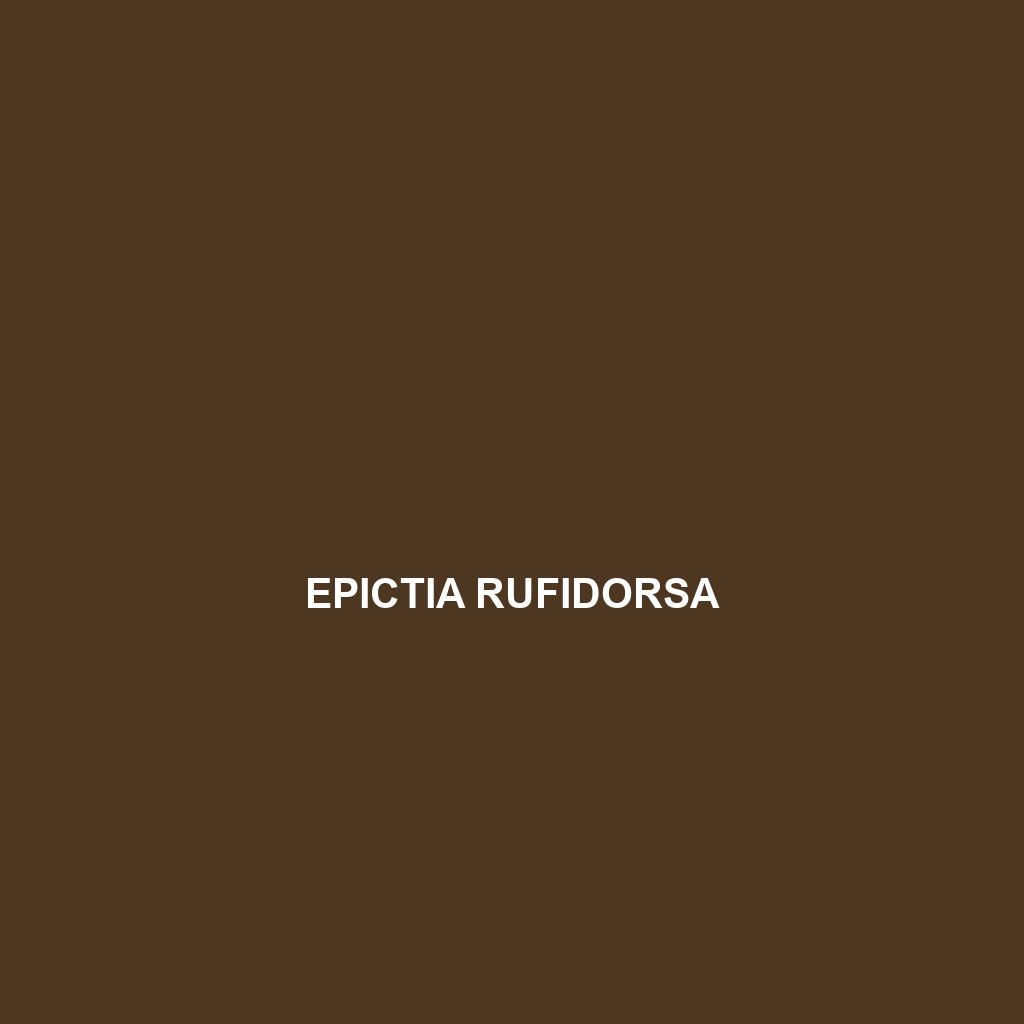Common Name
Epictia rufidorsa
Scientific Name
Epictia rufidorsa
Habitat
Epictia rufidorsa, commonly known as the Reddish Blind Snake, primarily inhabits tropical and subtropical regions. This species is predominantly found in various geographic areas, including parts of Central and South America, particularly in countries like Colombia, Ecuador, and parts of Brazil. The Reddish Blind Snake thrives in diverse environments, including rainforests, savannas, and occasionally within temperate forests. These snakes favor moist, humid climates that support their burrowing lifestyle, often residing in leaf litter and other organic matter on the forest floor. The combination of warm temperatures and high humidity levels makes these habitats ideal for their survival.
Physical Characteristics
Measuring an average of 20 to 40 centimeters in length, Epictia rufidorsa is a small, slender snake distinguished by its reddish-brown or rust-colored body, which helps it blend seamlessly into its environment. Its smooth scales and elongated, cylindrical shape enable it to navigate through soil and leaf litter effectively. A notable feature of this species is its vestigial eyes, which are usually covered by small scales, rendering it effectively blind. This adaptation is ideal for a burrowing lifestyle, allowing Epictia rufidorsa to be less reliant on sight while foraging and evading predators.
Behavior
Epictia rufidorsa exhibits a range of intriguing behaviors. Notably, this species is predominantly nocturnal, emerging at night to hunt for food and engage in social interactions. When disturbed, they frequently exhibit defensive behaviors, such as burrowing deeper into the earth or remaining motionless to avoid detection. Their mating rituals, which occur during the rainy season, involve males engaging in elaborate courtship displays. These displays may include body undulations and scent marking to attract females.
Diet
The diet of Epictia rufidorsa primarily consists of invertebrates, yet they have been observed consuming small vertebrates as well. As an insectivore, their primary food sources include ants, termites, and other small insects that they locate by sensing vibrations in the ground. Their unique feeding patterns involve using their keen sense of smell to detect prey hidden beneath the soil or in decaying plant matter.
Reproduction
Reproduction in Epictia rufidorsa typically occurs during the warm, rainy months when environmental conditions are most favorable. The mating season can last several weeks, with females laying clutches of 3 to 12 eggs. The gestation period varies depending on environmental conditions but usually lasts about 60 to 75 days. Once hatched, the offspring are independent, resembling miniature versions of adults. Parental care is minimal, emphasizing the need for self-sufficiency in their early stages of life.
Conservation Status
As of now, Epictia rufidorsa currently holds a conservation status of Least Concern according to the International Union for Conservation of Nature (IUCN). However, habitat loss due to deforestation and land conversion for agriculture poses potential threats to their populations. Conservation efforts are essential to ensure the continued survival of this species, particularly in areas facing significant environmental changes.
Interesting Facts
One fascinating fact about Epictia rufidorsa is its ability to consume prey much larger than its own diameter, utilizing its highly flexible jaw to achieve this. Additionally, they have an interesting adaptation where they are capable of surviving in environments affected by seasonal fluctuations in humidity and temperature due to their hardy nature and burrowing behaviors.
Role in Ecosystem
Epictia rufidorsa plays a critical role in maintaining ecological balance within its habitat. As a predator of various invertebrates, it helps control insect populations, thereby promoting healthy plant growth and biodiversity. Furthermore, its burrowing activities enhance soil aeration and nutrient cycling, contributing to the ecosystem’s overall health. The presence of this species indicates a robust and thriving ecosystem, making it a vital component of its biological community.
